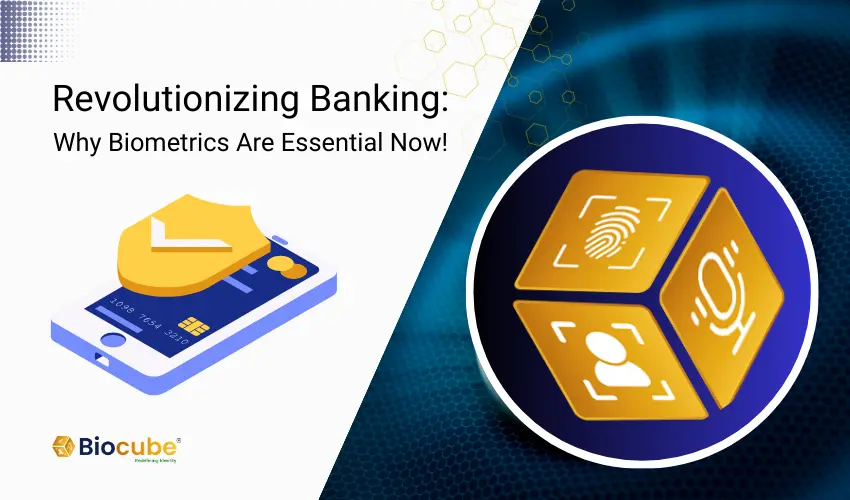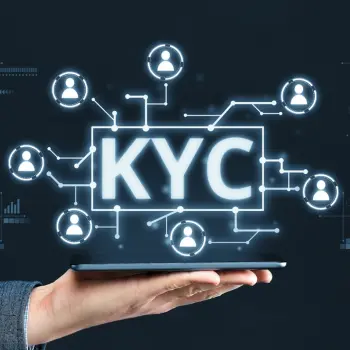
Biometrics in Banking: The rising cases of identity fraud have become painful for banks. According to a source, nearly 426,000 credit card fraud reports were filed in 2023. While the number has decreased from 448,000 fraud reports in 2022, it’s not much of a difference, even with the stringent Know Your Customer (KYC) guidelines banks take to ensure the safety of account access.
The statistics only represent credit card fraud in the US, while the number is much more significant on a global scale. The damage is not limited to the account holder’s access but causes hefty fines from the government for not following stricter protocols and ensuring customer safety.
Banks needed to take stricter measures to enhance the security and convenience of their customers. Therefore, the use of biometrics for app authentication, payment, and ensuring the authenticity of the end user has become prominent among the banking and financial service industry stakeholders.
Table of Contents
Why Biometrics Have Become Important for Banks?

Streamlines AML and KYC Regulatory Compliances
Banks must fulfill the Know Your Customer (KYC) and Anti-Money Laundering (AML) checks before onboarding anyone as a customer. Earlier, KYC checks required a dedicated person to validate a person’s authenticity.
With the inclusion of biometrics, or rather contactless biometrics like face, voice, finger, and others, it has become significantly easier to comply with such norms.
Moreover, it has enhanced the speed of onboarding the user because biometric technology often comes with active or passive liveness detection, which helps avoid spoofing and tampering during the registration process.
Diminishes or Even Eliminates the Risk of Fraud
Biometrics are unique to an individual, and mimicking fingerprints or other biometrics requires sophisticated methods and hefty expenditure. Therefore, only crime syndicates or similar parties can develop methods of for accessing accounts linked with biometrics, but it’s more challenging than it sounds.
With the inclusion of face, voice, and contactless fingerprint recognition, banks have elevated the level of their security. Moreover, they have secured the interest of the actual account holder while complying with the regulations. A majority of bank account frauds and account takeover attacks used to happen through identity fraud across countries.
Therefore, initially, banks implemented multifactor authentication, which means the user could set a password, and if he entered it correctly, it would prompt for a One-Time Password (OTP). However, with the rising OTP hijacking and password leaks, stringent measures had to be taken.
So, banks included biometric multifactor biometric authentication, which means that if an account holder scanned the face, it would still ask for voice or other biometric verification.
Hence, it led to enhanced security for the account holder, which is much better and more convenient than passwords or OTPs, while eliminating the risk of identity fraud.
Multiple Layers of Applications
Like passwords, PINs, or OTPs, biometrics also facilitate payments, access, and authentication, the three vital aspects of banking applications. They make the journey of using the app, making payments, and accessing sensitive account information much more convenient while eliminating the risk of account hijacking.
Unfortunately, the traditional contact-based mode of authentication has fallen victim to many forms of attacks. Banks and other organizations often demand video KYC or verification to grant app access or create an account.
However, the rising number of deep fake videos and the new-age artificial intelligence technology have made it much more convenient to upload such videos and create or access accounts.
Therefore, the best banks, financial institutions, and even corporations that are continuously involved in KYC verification are switching to passive liveness detection technology, which doesn’t require making gestures or uploading videos.
However, it still authenticates the individual. The new-age modern solution providers, like Biocube Technologies, Inc., also support geolocation, geofencing, and many other options to avoid spoofing or tampering attempts.
Conclusion
The application of biometric technology is vast in the banking and financial institution sector. The demand is increasing significantly because the BFSI stakeholders want to enhance their security and convenience.
Simultaneously, they want to avoid fines and comply with the regulatory norms. The introduction of contactless biometrics, such as face and voice, is enabling BFSI stakeholders to achieve the optimal level of their objectives.
BioKYC, a product of Biocube Technologies, Inc., has been developed to meet the rising demands of the BFSI market and includes aspects like AML, PEP, sanction checks, and more. The solution is driven by face recognition technology and streamlines the onboarding and access of the app while giving valuable insights on a customizable dashboard.
Download our brochure or connect with us to learn more about the technology and implement it in your organization.
Subscribe to our weekly newsletter below and never miss the latest product or an exclusive offer.
